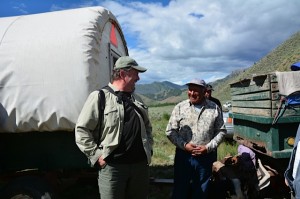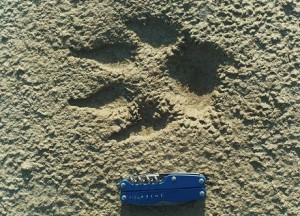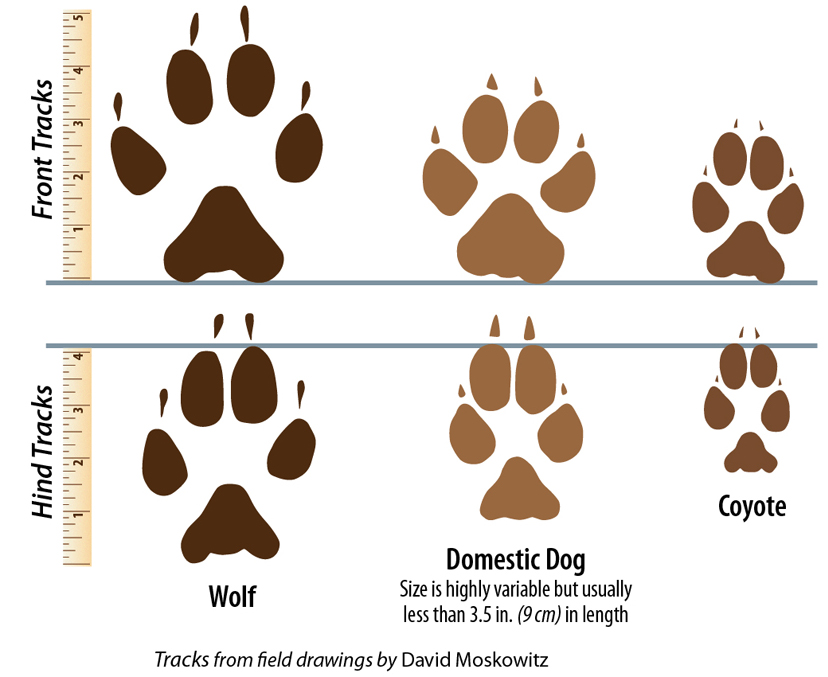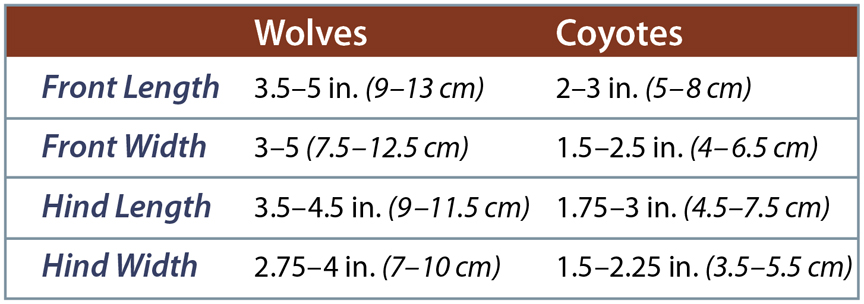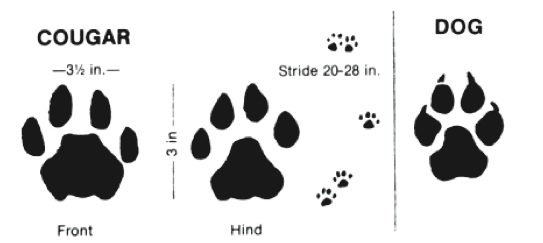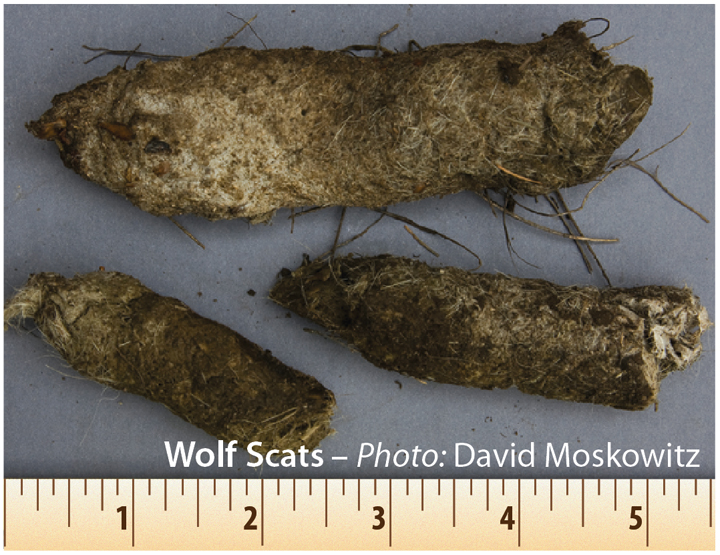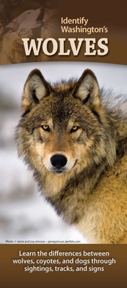Originally published January 5, 2014. Reprinted with permission of the Montana Pioneer
Interview conducted by Quincy Orhai
Recently, the Montana Pioneer spoke with Doug Smith, Yellowstone National Park Wolf Project Leader and Senior Biologist at the Yellowstone Center for Resources, about the nature of the wolves introduced to Yellowstone National Park in 1995, including the “non native subspecies” charge advanced by critics, and about ongoing research on wolves in the park.
MP: What were the genetic sources of wolves introduced into YNP—where did the existing wolf population originate?
DS: Forty one wolves were introduced to YNP in 1995. There were 14 in 1995 from Alberta, and 17 in 1996 from British Columbia, and 10 in 1997 from near Choteau, Montana. We have genetic evidence that some of those wolves went on to breed. So, 10 of the wolves that were introduced were from Montana, and 31 were from Canada.
MP: What were the main characteristics that were different between the wolves from Canada and the wolves that pre-existed here in Yellowstone, say 150 years ago? Is that known?
DS: Not really. All we have are skulls to judge it from. What we know from studying the skulls are that the wolves are essentially the same. The Canadian wolves were about 7 to 8 percent larger than the pre-existing wolves of Yellowstone. Seven to eight percent is within the variation of size difference found in wolf skulls all over North America, so the difference is statistically insignificant. It is important to compare apples to apples, so-to-speak. Pups and immature animals are smaller, and males are about 20 percent larger than females, at full size. It is important to compare similar age and gender skulls to each other. So comparing the handful of skulls that were preserved here as museum samples with over 150 skulls of wolves that have died here since they were introduced, the skulls are essentially the same, but the ones from Canada are slightly bigger.
Taxonomically (classifying in categories such as genus, species, and subspecies), you get differences between species when there are limitations on their ability to mix genetically. Wolves are stopped by nothing. They will cross mountain ranges, rivers, even pack ice. That’s how good this animal is at moving around. So what we have is this constant intermixing of genes that prevents them from becoming really different subspecies. Wolves origin-ated in North America a couple of million years ago. When glaciers connected Alaska and Russia, they crossed over into Russia. They got bigger over there. In the last 600,000 to 700,000 years differently evolved wolves have crossed back to North America in three waves. The remnants of the oldest wave of wolves returning to North America are now the most southern species, and also the smallest, Canis lupus baileyi, the Mexican wolf. The middle wave of evolved wolves returning to this continent from Asia are the gray wolves we have here now, and the most recent are the largest, the arctic wolves.
MP: Were the wolves introduced into YNP significantly different physically or behaviorally from the wolves that were here?
DS: The short answer is no. Wolves are ecological generalists. They can live on a variety of things. We looked for wolves that were previously exposed to bison and elk. The Canadian wolves had a small percentage of bison hair in their scat, but primarily elk and deer hair. We thought that was ideal, as that is the same diet—primarily elk and deer—as we have here. The available wolves from Minnesota had no experience with mountainous terrain or herds of elk or bison. We selected wolves from the same Rocky Mountain ecosystem, with the same kind of prey, to enhance the likelihood of the introduced wolves surviving. I want to clarify the misconception that larger Canadian wolves were preying on smaller American elk [thereby reducing the elk population inordinately]. In fact, the much smaller southwestern Mexican wolf brings down elk. The elk the Mexican wolves prey on in Arizona and New Mexico originally came from Yellowstone, as did the elk in Canada. The optimal number of adult wolves necessary to bring down an elk is only four, but a pair of wolves can also kill an elk.
MP: We hear reports that there were wolves already in Yellowstone that could have multiplied without reintroduction.
DS: There were no wolves here when we introduced the current wolves in 1995. There were no specially adapted wolves [as critics have claimed] in Yellowstone that did not run in packs, or use trails or roads, that didn’t howl, and that preyed on small prey, unlike the wolves we have now. There has simply never been a wolf recorded anywhere that lives like that. Furthermore, there is no better bird dog for a wolf than a wolf itself. We had radio collars on all 41 wolves we released over a 3-year period. If there were extant wolves already on the landscape, they would have found them. The wolves we released never turned up any other wolves, dead or alive. And by the way, they rarely eat other wolves that they kill.
MP: Wolves killing other wolves is the main cause of wolf deaths in the park, correct?
DS: Yes, almost half of the 15 YNP wolves that died in 2012 were killed by other wolves. However, for wolves living outside the park, 80 percent of the wolf deaths are caused by humans, mostly by shooting them.
MP: How many wolves are in YNP now?
DS: Last year at the end of 2012 there were at least 83 wolves occupying YNP in 10 packs (6 breeding pairs). This is approximately a 15 percent decline from the previous three years when the numbers had stabilized at around 100 wolves. Wolf numbers have declined by about 50 percent since 2007, mostly because of a smaller elk population.
MP: Would the 1994 population of gray wolves that lived in Montana have naturally recovered, given the protection of the Endangered Species Act?
DS: That was a big opinion-based debate by wolf biologists at the time, led by Bob Ream of the University of Montana. In his opinion, wolves would have recovered given enough time—50, 60 or 70 years. Other people think they would not have made it. Yellowstone National Park and the five National Forests around it can be likened to a huge island. It’s the most impressive wild land we have got in the lower 48, and some people say it’s the most impressive temperate zone wild land in the world. But it’s got an abrupt boundary to it. I frequently fly over here in an airplane, and at the boundary of a National Forest, it turns into a sea of humanity. And wolves are notoriously bad at getting through seas of humanity. Wolves get shot a lot. When we were dealing with a handful of wolves, maybe 40 to 60, how many of those would have been heading this way? So far, we have not yet documented a wolf coming from northwest Montana into Yellowstone. We have documented them coming from Idaho, but that’s a lot closer and the linkages are better, primarily in the Centennial Mountains. Wolves don’t do well over huge landscapes dominated by people. By introducing wolves they were legally not a fully protected species under the Endangered Species Act. People wanted to be able to shoot them when they got into livestock, which they could not have done if they were a fully protected species.
MP: Wolves from Idaho have now invaded the original Glacier National Park wolves, right?
DS: The Idaho wolf population is now fully connected to the northwest Montana wolf population. Interest-ingly, a study of historic wolf DNA from pelts and skulls shows that over 50 percent of wolf genetic diversity was lost when the continental United States population was reduced to a few hundred wolves in Minnesota. Wolves were the top carnivores in North America. Wolves evolved to adapt to the local conditions, and they will do so again.
MP: The tapeworm cysts spread by wolves that critics rail about, what risk to humans does this pose?
DS: The Echinococcus granulo sus tapeworm was already here. Wolves didn’t bring it in. The coyotes, foxes and domestic dogs likely had it before wolves. The human health risk from tapeworms is almost nil. If anyone should have Echinococcus tapeworm it’s me. I’ve handled over 500 wolves in my career. I take their temperature with a rectal thermometer. That’s where the tapeworm eggs come out. I now wear rubber gloves, but I wash my hands in snow, then eat my lunch. I wouldn’t worry much about it.
MP: What are the primary benefits and disadvantages of having wild ranging wolf packs in the Northern Rockies?
DS: The simplest way to answer that is that there is no question that wolves made people’s lives more complicated, and that’s a good reason not to have them. Some people love them, some people hate them, and wolves are a polarizing animal. People have to spend a lot of time dealing with the controversy that comes with wolves. Life is simpler without wolves. I admit that if you are a rancher, having wolves around is worrisome. I understand that it’s not just the cows they kill; it’s the sleepless nights. I think that’s the best argument to not have them.
What’s the ecological value of wolves? I don’t know. It’s a human dominated world. We control everything. So why do we need wolves? Landscapes look the way they do because of agriculture, forestry, hunting, mining, development—all those things trump things like wolves. So you really don’t get huge ecological benefits of wolves outside of National Parks. In National Parks you do. So why have wolves on these huge landscapes where there are people? Good question. The best answer is, because people want them there. You know, there are a lot of people that don’t like wolves. There is an equally large number that do like them, because living in Idaho, Montana and Wyoming is unique and different than living in places like Illinois, Iowa and Arkansas. You have grizzly bears, you have wolves, you have cougars. And that brings in a lot of tourism dollars. Wolves and grizzly bears are the two top attractions to Yellowstone. Idaho, Montana and Wyoming are perceived as being pristine, just because of the mere existence of the three large, toothy carnivores. It makes visiting or living here more valuable and a better experience. Economics are more important than ecology when it comes to carnivore populations in Yellowstone National Park.
Right now, it’s as natural as it’s ever been in Yellowstone Park. Now we have more predators than we have ever had, which means we have fewer elk, and fewer elk means we have all these other ecological benefits, like beavers and songbirds and fishes, and generally enhanced riparian habitat, because fewer elk means less browsing of riparian habitat. So it’s a more balanced ecosystem. We only get that because we have natural densities of carnivores. As soon as you cross the park line, all the densities of those carnivores go down because humans manage them. And that is fine; it’s not a criticism. The carnivores are on the landscape. That’s the thing that the tourists like, but they are not at their normal densities that would occur if people didn’t manage them.
MP: What about surplus killing by wolves [where, for example, ranchers report wolves killing or maiming a dozen sheep in one night]?
DS: Surplus killing by wolves doesn’t really exist, per-se. We have watched wolves when they have killed more meat than they can immediately consume, and they always come back to finish the carcass unless they are spooked off by people. Hunting success rates for wolves are in the 5 percent to 15 percent range with elk. So they actually get about one in ten of the elk they go after. Eighty five percent to 95 percent of the time, the elk wins, and the wolves get nothing to eat. So, from an evolutionary perspective, if the wolves are not highly motivated to kill whenever they can, they will lose out. Of the 500 wolves I have handled, all across America, in the Midwest, Canada, Alaska, Yellowstone and Idaho, most of them are skinny beneath their beautiful fur. When I have felt their backbones and their pelvises, they usually are skinny. They are just getting by. The prey is better at getting away than the wolves are at killing the prey. So it is so hard to get dinner and when they do get a chance to kill, they kill. That’s how you get so-called surplus killing, when the elk are weak and in deep snow, wolves will kill more than they can eat. Also, defenseless sheep will be killed in large numbers because the wolves can do so. But I would argue that if the rancher didn’t come out the next day with a rifle, the wolves would eat all those sheep, even if it took them weeks to do so.
Wolves don’t kill for the fun of it, when they are likely to get their head bashed in getting dinner. We have seen 15 or more wolves that have been killed by elk, bison, deer and moose. Wolves are risk averse. They don’t want to try to kill something that’s going to get their head bashed in or their stomach kicked in, but when it’s easy, they will kill more than they can immediately eat, but those circumstances crop up pretty rarely. The wolves always cycle back to finish the carcass.
MP: What is the effect of wolves on the coyote population?
DS: Wolves kill coyotes when they approach wolf kills. Pre wolf-introduction, coyotes were living in packs in YNP, and that’s something that’s unusual. When there are wolves around, the coyotes pretty much live in pairs. Coyotes love coming in and stealing from wolves, and that got them killed. According to unpublished research, supposedly the coyote population dropped in half after the wolf introduction. Over 90 percent of the coyotes that are documented as being killed by wolves have been killed at wolf kill sites—they over estimated the wolves being meat drunk. So the coyotes quit running in packs, and went back to living in pairs, and became more wary around carcasses. The coyotes supposedly socially adapted to wolves, and their population went back to pre-wolf levels. This research is incomplete and inconclusive, but fascinating.
MP: Thank you, Doug. We appreciate this opportunity to present knowledge you have gained over the years about wolves, and at the same time address some of the contro-versies.
DS: Wolves are troublesome and controversial. I understand that. A lot of people don’t like them, but a lot of people do like them, and they make money for a lot of people. What I am really after is to get as good a quality of information out there as possible, to help the debate to be a little bit better. The extreme anti-wolf person and the extreme pro-wolf person are always going to be problematic; they are never going to be happy. But this big group of people in the middle can come together on more than they think. If we can get an established group of facts about wolves correctly understood, I do think we can make progress in treating wolves just like any other animal, like a cougar, like a bear, like an elk. Sometimes and in some places their numbers need to be cut back, and just like any other form of wildlife, they need to be scientifically managed..


